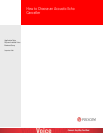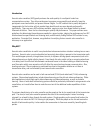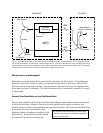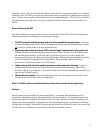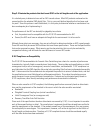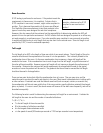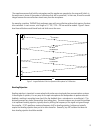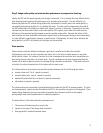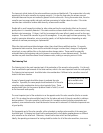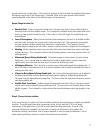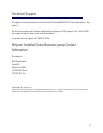Step 2: Eliminate the products that don’t meet G.167 or the tail length needs of the application.
It is relatively easy to determine how well an AEC cancels echoes. Most AEC products are based on the
same algorithm: the adaptive LMS digital filter. This is a very well-defined algorithm that has been used
for years. Since this process is well established, it is fairly easy to determine whether a manufacturer has
done an adequate job of implementing it.
The performance of the AEC can basically be judged by two criteria.
• First, the product must be compatible with the ITU G.167 recommendation for AEC.
• Second, the AEC must have an adequate tail length for the environment it is to be used in.
Although these criteria are necessary, they are not sufficient to determine whether an AEC is good enough.
There will most likely be several AEC solutions that meet these specifications. These are the specifications
that can be compared on paper. What remains are the characteristics that can only be evaluated by
comparative listening, and will make the most difference in how an AEC sounds.
G.167 Compliance or Compatibility
The ITU G.167 Recommendation for Acoustic Echo Controllers gives criteria for a number of performance
characteristics typically listed on manufacturers’ data sheets. These include such specifications as initial
convergence time (or rate of convergence), amount of cancellation, and bandwidth. G.167 compliance is a
good indication that the LMS algorithm (the actual echo canceling filter) has been implemented reasonably
well. It also means that the manufacturer has subjected the product to a series of standard tests, and that
the specifications are most likely based on valid experimental data. This makes the selection process
easier, because it sums up many different characteristics. Products can be eliminated easily based on
G.167 compliance, rather than by evaluating each performance characteristic individually.
When an echo canceller is G.167 compliant, the following specifications commonly found on data sheets
have met the requirements of the standard in the room in which the echo canceller was tested:
• Bandwidth
• Weighted Terminal Coupling Loss (or total cancellation)
• Initial Convergence Time (or convergence rate)
• Recovery Time After Echo Path Variation
Since most of the specifications found on data sheets are covered by G.167, it is not important to consider
each of these specifications in detail. The manufacturer’s equipment should have already been verified to
meet the requirements of the standard. If the product exceeds any of the requirements, this may improve
the audio quality to some degree. This improvement, however, will not be as significant as the effects of
the tail length and state machine. Therefore, all G.167 compliant devices should be considered equally
until the other factors have been evaluated.
6



